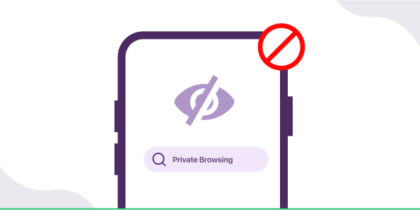Table of Contents
Port mirroring allows network administrators to gain insights into the operation of their networks, detect anomalies, and respond to issues promptly.
It stands out as a critical enabler of network visibility and provides a non-intrusive means of observing network behavior.
It is a versatile tool that empowers network professionals to make informed decisions and ensure network efficiency. Let’s discuss all about port mirroring.
Understanding Port Mirroring
Port mirroring is like making a copy of traffic on a network and sending it to another location. This copy helps IT professionals analyze network activity without interrupting it. It’s a valuable tool for spotting issues, ensuring security, and optimizing network performance.

Examples of Port Mirroring
- Intrusion Detection System (IDS): Port mirroring can copy network traffic to an IDS for deep packet inspection. This allows the IDS to analyze the data for signs of cyber threats.
- Network Performance Analysis: Network administrators can use port mirroring to duplicate traffic to a monitoring tool that tracks bandwidth usage and identifies bottlenecks.
- Packet Capture for Troubleshooting: When network issues arise, port mirroring can be employed to duplicate traffic for packet capture tools like Wireshark, aiding in diagnosing problems.
- Compliance Monitoring: For regulatory compliance, businesses may use port mirroring to create copies of network traffic for auditing and reporting purposes.
Port Mirroring Vs. Other Network Monitoring Techniques
| Monitoring Technique | Description | Pros | Cons |
| Port Mirroring (SPAN/RSPAN) | Duplicates network traffic for analysis without disruption. | Non-intrusive, ideal for in-depth analysis. | Limited capacity of monitoring port. It may not capture all traffic in high-speed networks. |
| Packet Sniffing | Uses software tools to capture packets on a specific interface. | Highly flexible and useful for troubleshooting. | It can introduce additional load, may miss some traffic, and is unsuitable for large-scale monitoring. |
| NetFlow Analysis | Collects and analyzes flow data for network insights. | Scalable provides aggregated network data. | Limited packet-level details may not detect specific issues. |
| SNMP Monitoring | Gather data from network devices using SNMP protocol. | Comprehensive device information, efficient for device management. | Limited in capturing actual packet data, more focused on device status. |
| Deep Packet Inspection | Analyzes packet content for application-specific data. | Offers in-depth insights into application behavior and content. | Resource-intensive and may not be suitable for high-speed networks. |
| sFlow | Samples packets at network devices for traffic statistics. | It helps identify network anomalies and patterns. | It may require compatible network equipment. |
| RMON (Remote Monitoring) | Enables remote monitoring and management of network devices. | Provides detailed statistics on network performance and usage. | Requires support from network devices. |
| Flow-based Analysis | Collects data about the flow of traffic using various flow analysis methods. | Offers insights into network flows and behavior. | Specific protocols may require compatible devices. |
| Endpoint Detection and Response (EDR) | Focuses on monitoring endpoints for security threats. | Monitors processes, files, and system behavior. | Limited to endpoint devices may not provide a holistic network view. |
| Passive DNS Monitoring | Monitors DNS traffic for identifying malicious activities. | It is crucial for identifying threats related to domain names. | Specific to DNS traffic and may not cover broader network issues. |
| Application Performance Monitoring (APM) | Tracks application performance and availability. | Ensures applications meet service-level agreements. | Focuses on applications, not network infrastructure. |
| Log Analysis | Analyzes logs from network devices and servers for insights. | Provides insights into network performance and security events. | Requires parsing and understanding of log data. |
Step-by-Step Process of Port Mirroring: Easy To Understand
Although port mirroring is most helpful for organizations, here is a process for you to understand easily:
- Selecting Source Ports
First, the network ports called ‘source ports’ are selected. The traffic going to and from a specific computer or device.
- Designating a Destination
Next, you decide where you want to send the copied traffic. This unique port is called the “destination port.”
- Mirroring Setup
You configure your network switch to create a copy of the traffic from the source ports and send it to the destination port.
- Traffic Copying
When data flows through the source ports, the switch copies the packets and sends them to the destination port in real time.
- Observation and Analysis
Now, you can connect a monitoring tool or device to the destination port. This tool can be a computer with network analysis software or any device that can capture and examine the traffic.
- Packet Capture and Analysis
As the copied traffic flows into the destination port, your monitoring tool captures it. You can then analyze the packets to check for issues, troubleshoot problems, or monitor network performance.
Image description: Packet sniffing used in port mirroring
Some Common Use Cases of Port Mirroring
Port mirroring acts as a surveillance system for your network. Here are some everyday use cases of port mirroring:
- Network Security
By copying data from the source code to the destination, you can efficiently monitor any vulnerabilities or suspicious activities affecting your network security. These early detections allow you to be on the safer side.
- Performance Analysis
Port mirroring also finds out the bottlenecks in the data flow. This makes sure that data is optimized, hence reducing lags. It also helps in faster internet access.
- Troubleshooting: Resolving Network Issues Efficiently
Network problems can be frustrating. Port Mirroring is your network’s detective. It provides a detailed record of what’s happening. So, when things go wrong, you can see what caused it.
- Compliance and Regulatory Requirements
Creating a transparent record of network activities is essential. This record can prove that your network complies with the rules. Port mirroring helps to be compliant with legal laws and procedures.
How Can Organisation Use Port Mirroring Efficiently
Setting up Port Mirroring is like installing a security camera in your network – you want to do it right to get the best results. Here are the steps you need to follow:
- Proper Planning
Before you start, think about what you want to achieve with Port Mirroring. Are you doing it for security, performance analysis, or troubleshooting? Knowing your goal helps you set up the mirroring effectively.
- Choosing the Right Hardware and Software
You’ll need a managed switch that supports Port Mirroring. These switches allow you to configure the mirroring. Additionally, you might need specific software or tools to capture and analyze the mirrored traffic. Ensure you have the right equipment for your needs.
Supported Hardware and Switch Configurations
| Supported Hardware and Switch Configurations | |
| Supported Switches | Managed or Smart Switches |
| Managed Switches | Standalone, Stackable, or Chassis-based |
| Spanning Tree Protocol (STP) | Ensure Port Mirroring does not disrupt STP |
| Virtual LANs (VLANs) | Careful configuration when using VLANs |
- Securing Mirrored Traffic
It’s essential to protect the mirrored traffic. You don’t want unauthorized people peeking into it. Ensure the destination port where the mirrored data goes is secure, and only authorized personnel can access it. This is crucial for maintaining network security.
- Monitoring Tools and Software Options
Depending on your goals, you’ll need monitoring tools or software. These are like the screens and recorders for your network camera. They capture and analyze the copied traffic.
Look for user-friendly tools that suit your requirements. Some even offer real-time alerts so that you can respond to issues quickly.
Drawbacks of Port Mirroring
It’s essential to weigh limitations against the benefits when deciding whether to implement port mirroring in a network infrastructure. Here are some critical drawbacks of port mirroring:
Resource Utilization
Port mirroring consumes network resources as a whole. It mirrors the traffic from source to destination, which the analyst decides. The other network traffic might be restricted.
Inability to Capture All Traffic
Port mirroring copies traffic from one or more source ports to a designated monitoring port.
However, if the network is saturated or certain packets are dropped due to congestion, the monitoring system may not capture all the network traffic. Critical events might be missed.
Latency and Timing Issues
Port mirroring introduces some latency in the copied traffic. For time-sensitive applications or protocols, even a slight delay can be problematic.
Moreover, accurate timing and synchronization between packets might only sometimes be preserved, potentially affecting the reliability of network analysis tools.
Security Risks
Enabling port mirroring creates a potential security risk, as it exposes network traffic to the monitoring infrastructure.
If the monitoring equipment is compromised, it could lead to unauthorized access or data breaches. Proper access controls and security measures are essential.
Limited Scalability
As the network grows, the complexity of port mirroring configurations can become unwieldy. It may be challenging to scale port mirroring to accommodate more extensive networks without significant effort and potential bottlenecks.
Single Point of Failure
The monitoring port designated for receiving mirrored traffic can become a single point of failure.
If it experiences issues or becomes unavailable, network visibility is lost, and it could impact troubleshooting and security monitoring efforts.
Management Overhead
Configuring and managing port mirroring can be complex, particularly in large and dynamic network environments.
Maintaining a clear understanding of what is being monitored and ensuring the configuration remains accurate is an ongoing management task.
Legal and Compliance Considerations
Depending on local laws and regulations, mirroring network traffic may have legal implications, particularly regarding privacy and data protection.
Organizations should be aware of these considerations when implementing port mirroring.
What’s the difference between SPAN (Switched Port Analyzer) and RSPAN (Remote Switched Port Analyzer)?
SPAN (Switched Port Analyzer) captures local network traffic within a single switch, simplifying essential monitoring.
In contrast, RSPAN (Remote Switched Port Analyzer) extends this capability, allowing remote switches to send traffic to a centralized destination switch.
RSPAN is ideal for distributed networks, while SPAN suits local monitoring needs.
What is port mirroring Cisco?
Cisco uses the term SPAN (Switch Port Analyzer) to describe its port mirroring feature. In contrast, other network equipment vendors may use different terminology, such as port mirroring, port monitoring, or mirror port.
Cisco’s SPAN is known for its flexibility and rich feature set, allowing you to mirror traffic from source interfaces, VLANs, and specific traffic types. It also supports Remote SPAN (RSPAN), which extends the mirroring to remote switches over the network.
What is port mirroring VMware?
Port mirroring in VMware, often called vSwitch Port Mirroring, is a feature for duplicating network traffic from virtual machines to a designated monitoring port or VM.
It aids network troubleshooting, performance optimization, and security monitoring within virtualized environments.
Get Your Mirrors Clean!
Port mirroring is one of the efficient ways to keep your network requirements aligned. Different sectors use the technique to monitor their traffic for various purposes.
Detecting work anomalies, restricting the quality of service, and enhancing secure access are some of the highlighted features of port mirroring. But with benefits, the technique has certain drawbacks.
Although it provides transparency and detection for future security, it lacks encryption. Being a monitoring tool, port mirroring is used for analysis but will not guarantee safe access. Complement using a reliable VPN for a better security combo.
Tools, methods, and techniques are ways to security, but the main idea is vigilance and resilience to stay secure!



